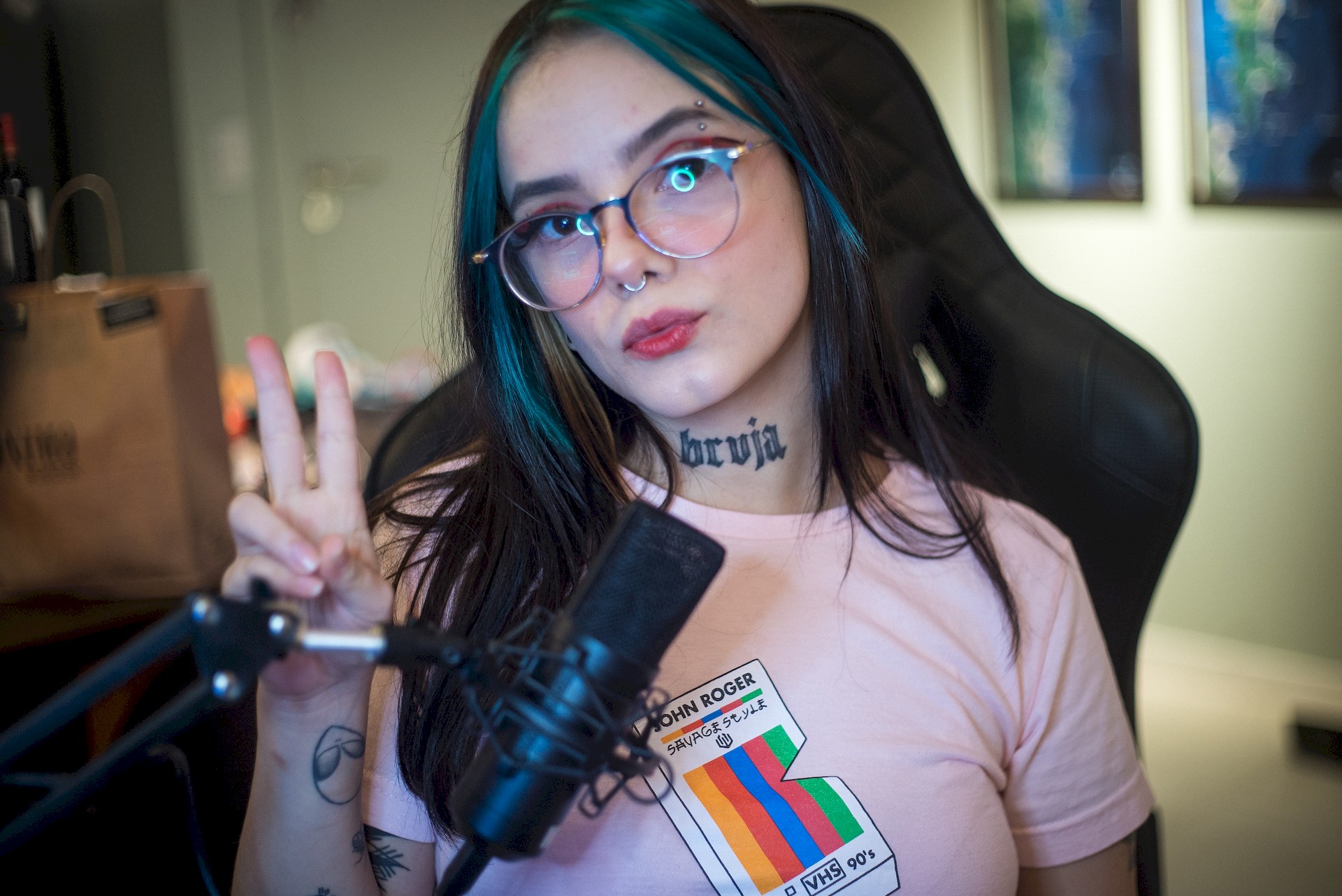Twitch is finally giving artists the freedom to draw nude characters without fear of bans. The platform recently announced a major update to its artistic nudity policy, the new Twitch TOS now allows previously prohibited content as long as it’s appropriately labeled. This means artists can now showcase their talent without worrying about their work being taken down.
The new Twitch TOS comes after years of complaints about Twitch’s inconsistent and often unfair moderation practices. In the past, female streamers were disproportionately targeted for violating the platform’s rules, even for minor offenses.
The new Twitch TOS aims to address this by creating a level playing field for all creators, especially for those who are creating artistic nudity content.
The new Twitch TOS on artistic nudity was announced by the following tweet/xeet by the official Twitch account on X:
We’ve gotten feedback that our policies around sexual content are unclear so we’ve drawn clearer boundaries between what is & isn’t permitted on Twitch.
We also recognize that not everyone wants to see certain content, so we’re updating our criteria for homepage recommendations. pic.twitter.com/rvZ4kFADR6
— Twitch (@Twitch) December 13, 2023
New Twitch TOS allows artistic nudity on the platform
Under the new guidelines, Twitch will now allow “deliberately highlighted breasts, buttocks, or pelvic region” as long as the stream has a Content Classification Label (CCL). This label warns viewers that the stream contains mature content, allowing them to make informed decisions about whether or not to watch.
The new policy also allows for “drawn, animated, or sculpted ‘fully exposed female-presenting breasts and/or genitals or buttocks regardless of gender'”.
This is a major victory for artists who have long been frustrated by Twitch’s restrictions on nudity.
Erotic dances are also OK now
In addition to allowing nudity, Twitch is also loosening its restrictions on erotic dances. Streams featuring strip teases will now be allowed as long as they have a CCL. However, Twitch will no longer require a label for streams involving twerking, grinding, and pole dancing.
The new Twitch TOS has been announced with the following words in a blog post:
Some types of content that were prohibited will now be allowed on Twitch, if appropriately labeled. These changes include:
Previously prohibited but now Allowed With Label
- Content that ‘deliberately highlighted breasts, buttocks or pelvic region,’ even when fully clothed. Streamers found it difficult to determine what was prohibited and what was allowed and often evaluating whether or not a stream violated this portion of the policy was subjective. In addition, the former Sexually Suggestive Content policy was out of line with industry standards and resulted in female-presenting streamers being disproportionately penalized
- Fictionalized (drawn, animated, or sculpted) fully exposed female-presenting breasts and/or genitals or buttocks regardless of gender. There is a thriving artist community on Twitch, and this policy was overly punitive and did not reflect the impact of the content
- Body writing on female-presenting breasts and/or buttocks regardless of gender. The Twitch Attire Policy already allows body art on breasts and buttocks, so this change makes these policies consistent
- Erotic dances that involve disrobing or disrobing gestures, such as strip teases
Changes to Popular Dances
Popular dances, such as twerking, grinding, and pole dancing are now allowed without a label. Previously some dances were prohibited and others were allowed with a label. Enforcing on dances regardless of context meant our policy prohibited twerking at a wedding or taking a pole dancing exercise class, for example. The policy now takes context into consideration, and only prohibits streaming inside of an adult entertainment establishment.
How will Twitch handle nudity in gaming?
Twitch applies a multi-step approach to nudity in gaming. Firstly, games that feature nudity, pornography, sex, or sexual violence as a core focus or feature are entirely prohibited. This means that games that have nudity, pornography, sex, or sexual violence as their main focus or feature are not allowed on the platform.
Secondly, custom gameplay or visual modifications that include nudity or sex content, including uncensored patches, in otherwise allowed games are prohibited. This means that even if a game is allowed on platform, any custom modifications that include nudity or sex content are not allowed.
Thirdly, incidental nudity in games that are not primarily focused on sexual content is allowed, but streamers must apply a content classification label to their stream. This means that if a game has nudity but it’s not the main focus of the game, it’s allowed on Twitch, but the streamer must apply a content classification label to their stream.

Fourthly, streamers are required to label their stream if the content or behavior is very likely to elicit a more mature chat conversation. This means that if a streamer is playing a game that has mature content, they must label their stream so that viewers are aware of the content.
Fifthly, soliciting content that falls under sexual themes, including nudity, pornography, or sexual violence, is prohibited. This means that streamers are not allowed to ask for nudity, pornography, or sexual violence in their streams.
Sixthly, streamers are not allowed to engage in simulated sexual activity or erotic roleplay with other players in online games. This means that streamers are not allowed to engage in any sexual activity or roleplay in online games, even if it’s simulated.
Lastly, games that primarily consist of user-generated content, in-game roleplay, or interactions in virtual reality are not exempt from this policy. This means that even if a game is primarily focused on user-generated content, in-game roleplay, or interactions in virtual reality, it’s still subject to platform’s policy on nudity and sexual content.
The fine line
Seen as a blessing bestowed on the gaming community in 2011, twitch has undergone serious changes in the past 13 years. The platform, whose main focus used to be gaming, is now making a name for itself with IRL streams.
Popular gaming streamers like Dyrus, Shroud and Ninja have been replaced by streamers like Adin Ross and Kai Cenat. Of course, there’s nothing wrong with this and change is natural on the internet, but it’s important to note that it is no longer just a “gaming” platform.
Let’s get to the real question here. Has Twitch lost its identity?
With the growing popularity of the platform, almost everyone who wants to earn an additional income has started to flock to the platform. Over time, streamers brought different voices and flavors to the platform, which led to a change in the platform’s identity. On the platform, which started as a game-oriented platform, first reaction videos like on YouTube, then the “Just chatting” category was opened, and many streamers who did everything but play games in the simplest terms occupied the platform.
Over time, the platform had to fight against nudity content and its identity changed almost completely. Twitch, which was a safe haven for the gaming community, is now detached from its identity.
Featured image credit: Caspar Camille Rubin/Unsplash.
- SEO Powered Content & PR Distribution. Get Amplified Today.
- PlatoData.Network Vertical Generative Ai. Empower Yourself. Access Here.
- PlatoAiStream. Web3 Intelligence. Knowledge Amplified. Access Here.
- PlatoESG. Carbon, CleanTech, Energy, Environment, Solar, Waste Management. Access Here.
- PlatoHealth. Biotech and Clinical Trials Intelligence. Access Here.
- Source: https://dataconomy.com/2023/12/14/new-twitch-tos-artistic-nudity/
- :has
- :is
- :not
- 1
- 11
- 13
- 2011
- 500
- a
- About
- activity
- addition
- Additional
- address
- Adult
- After
- against
- aims
- All
- allow
- allowed
- Allowing
- allows
- almost
- already
- also
- an
- and
- announced
- any
- applies
- Apply
- approach
- appropriately
- ARE
- around
- Art
- artist
- artistic
- Artists
- AS
- ask
- At
- aware
- Bans
- BE
- been
- behavior
- being
- bestowed
- between
- blessing
- body
- boundaries
- brought
- but
- by
- CAN
- Category
- certain
- change
- changed
- Changes
- characters
- class
- classification
- clearer
- comes
- community
- complaints
- completely
- consideration
- contains
- content
- context
- Conversation
- Core
- course
- Creating
- creators
- criteria
- custom
- Dancing
- decisions
- Determine
- DID
- different
- difficult
- down
- draw
- drawn
- earn
- enforcing
- engage
- Entertainment
- entirely
- especially
- establishment
- Ether (ETH)
- evaluating
- Even
- everyone
- everything
- example
- exempt
- Exercise
- exposed
- Falls
- fear
- Feature
- Featuring
- feedback
- female
- field
- fight
- Finally
- fine
- First
- Focus
- focused
- following
- For
- Former
- found
- Freedom
- from
- frustrated
- fully
- game
- gameplay
- Games
- gaming
- Gender
- get
- Giving
- grinding
- Growing
- guidelines
- had
- handle
- Have
- haven
- here
- High
- Highlighted
- homepage
- However
- HTTPS
- Identity
- if
- image
- Impact
- important
- in
- in-game
- incidental
- include
- Including
- Income
- industry
- industry standards
- informed
- inside
- interactions
- Internet
- into
- involve
- involving
- irl
- IT
- ITS
- itself
- jpg
- just
- Label
- Led
- Level
- like
- likely
- Line
- Long
- longer
- lost
- Main
- major
- make
- MAKES
- Making
- many
- mature
- max-width
- means
- meant
- minor
- moderation
- Modifications
- more
- must
- name
- Natural
- New
- new policy
- ninja
- no
- note
- nothing
- now
- of
- often
- on
- online
- only
- opened
- or
- Other
- Others
- otherwise
- our
- out
- over
- overly
- past
- Patches
- platform
- Platforms
- plato
- Plato Data Intelligence
- PlatoData
- Play
- players
- playing
- policies
- policy
- Popular
- popularity
- Pornography
- portion
- practices
- previously
- primarily
- prohibited
- question
- reaction
- real
- Reality
- recently
- recognize
- recommendations
- reflect
- Regardless
- region
- replaced
- require
- restrictions
- resulted
- rules
- safe
- Safe Haven
- see
- serious
- Sex
- Sexual
- showcase
- So
- some
- standards
- started
- Still
- stream
- streaming
- streams
- Strip
- subject
- such
- taken
- takes
- taking
- Talent
- targeted
- terms
- that
- The
- their
- Them
- themes
- then
- There.
- These
- they
- this
- those
- thriving
- time
- to
- ToS
- true
- Twitch
- types
- unclear
- under
- undergone
- unfair
- Update
- updating
- used
- very
- victory
- Videos
- viewers
- violated
- Violating
- Virtual
- Virtual reality
- visual
- VOICES
- wants
- Warns
- was
- Watch
- wedding
- were
- What
- What is
- when
- whether
- which
- WHO
- whose
- will
- with
- without
- words
- Work
- worrying
- writing
- Wrong
- X
- years
- youtube
- zephyrnet












